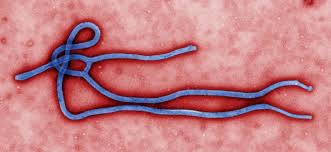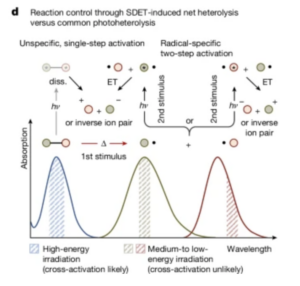Introduction
The Ebola virus disease (EVD) was discovered in Africa in 1976. It causes excessive bleeding in humans and some primates and is often fatal. EVD is highly transmissible and is spread by direct contact (Jacob et al., 2020). There are six known strains of EVD today: Zaire, Sudan, Tai Forest, Bundibugyo, Reston, and Bombali. All except the Reston and Bombali strains can cause diseases in humans. Its transmission into humans is believed to have occurred when Patient Zero went hunting and consumed the meat of an infected animal (Jacob et al., 2020). In the years since its discovery, there have been dozens of outbreaks worldwide, mostly in Africa and Europe (Mohd et al., 2024).
The Sudan strain of EVD has nearly a 90% case-fatality rate, and the disease is usually fatal within a month. This virus appears and disappears in sporadic epidemics, which makes it difficult to find cures for. Viruses are more difficult to preserve in a lab than bacterial or fungal samples since viruses require host cells to stay alive, and since EVD is caused by a virus rather than a bacteria, it is difficult to keep samples intact in a laboratory for ongoing studies after an outbreak ends. Survivors of EVD generate antibodies to the virus, which serves as an EVD-specific line of defense should they be infected again (Jacob et al., 2020). The search for a cure to EVD has centered around the production of such antibodies without exposing patients to the disease first.
Vaccines are created by introducing weakened or inactive forms of a virus to the body. This agent does not have the capacity to cause disease in the patient. However, it demonstrates for the immune system what the active form of that virus would look like and allows the body to create antibodies to prepare for a full infection, should one ever occur. The immune system uses this experience to prepare for an infection by generating antibodies specific to the pathogen introduced. Monoclonal antibodies (immune signaling chemicals that alert B and T cells of the presence of specific pathogens) can also be artificially created and introduced directly into the body, which is another type of treatment made possible by this study.
EVD infects hosts when individual virus particles bind to healthy body cells and hijack the cell’s machinery to create more viruses. All cells have receptor sites on their membranes that are used for communication. Each receptor type is unique and fits the shape of a specific messenger chemical (ligand) which is absorbed into the cell for processing. Some ligands, however, are structurally similar enough to pathogen surface proteins that their respective receptors can be used to absorb pathogens into a cell. The cell has no way of knowing what is attached to the molecule binding to it, so a pathogen can easily enter a cell this way (Hastie et al., 2025).
EVD’s RNA genome codes for seven proteins, five of which contribute to the external structure of virus particles. One such structural protein is the glycoprotein (a molecular signal composed of protein-like and sugar-like parts) on the surface of Ebola particles, which is essential for the pathogen to bind to and enter host cells.
Methods
Glycoproteins, which are sometimes called spike proteins, are diverse among pathogens and therefore are an effective segment to use to create an array of effective vaccines. In this experiment, researchers at the La Jolla Institute for Immunology used x-ray crystallography to visualize the structure of an Ebola particle. The surface glycoproteins 1 and 2 were isolated from the Ebola virus to investigate the sites where the virus is able to bind to human cells (Hastie et al., 2025).
Results
This experiment revealed through in vitro and mouse trials that a receptor known as 3A6 on human cell membranes is the binding site for EVD through both glycoproteins 1 and 2 (Hastie et al., 2025). Since site 3A6 binds to these unique proteins, monoclonal antibodies that would target EVD pathogens would have a similar structure. Once such antibodies can be created, the body has a method for detecting EVD particles in the bloodstream and destroying them before they can replicate beyond control.
Conclusion and Discussion
Now that the method of cell entry for Ebola virions has been studied, the next step is to create accessible treatments – both preventative and therapeutic – for people at risk of contracting EVD. It is known that the glycoproteins 1 and 2 studied here have a relatively slow rate of mutation on a viral scale, which means that any treatments that can be manufactured to focus on these spike proteins will be effective for a long time. In other words, a person who has been exposed to a vaccine containing an inactive Ebolavirus glycoprotein 1 or 2 will have a better outcome if infected than they would if they had been vaccinated with a different piece of the virus. On the other hand, flu vaccines need to be renewed every year because influenza spike proteins mutate much faster, which means that immunity to the spike protein of last year’s strain becomes obsolete as soon as a new strain takes hold.
Knowledge of the 3A6 binding site is valuable for eventual immunity to EVD and related filoviruses. As with any disease, when more people become vaccinated against it, it becomes less likely that deadly outbreaks will continue appearing as sporadically as they do.
Works Cited:
Hastie, Kathryn M., et al. “Anti-Ebola Virus MAb 3A6 Protects Highly Viremic Animals from Fatal Outcome via Binding GP(1,2) in a Position Elevated from the Virion Membrane.” Nature Communications, vol. 16, no. 1, Nature Portfolio, Feb. 2025, https://doi.org/10.1038/s41467-025-56452-2. Accessed 7 Feb. 2025..
Jacob, Shevin T., et al. “Ebola Virus Disease.” Nature Reviews Disease Primers, vol. 6, no. 1, Feb. 2020, www.nature.com/articles/s41572-020-0154-4..
Mohd, Omar B., et al. “The Development of Ebola Virus Outbreaks: A Review of Epidemiological Trends, Clinical Features, and Treatment Advances.” Cureus, Cureus, Inc., Nov. 2024, https://doi.org/10.7759/cureus.74078. Accessed 11 Jan. 2025..


